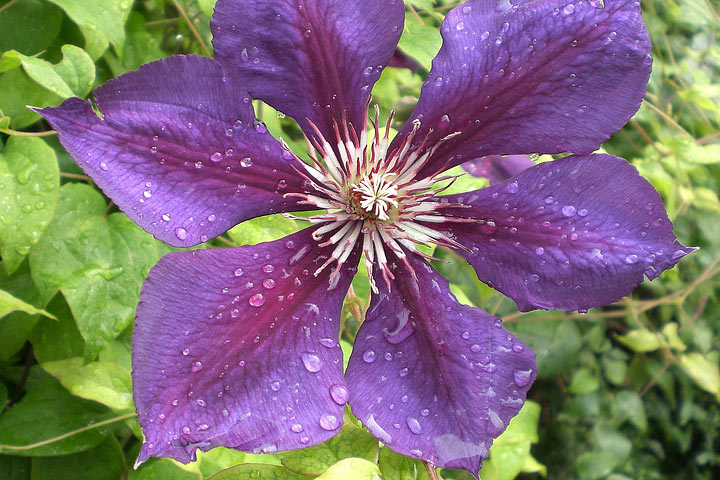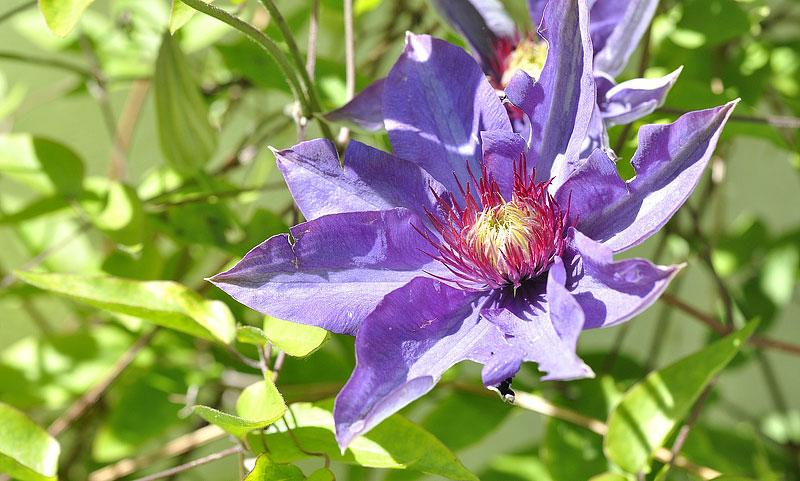
Gardeners are a helpful bunch, always eager to pass along useful tips. Though we can learn a great deal this way, we shouldn’t be surprised that some bad information keeps getting spread around. Here are three often-heard myths about clematis you should ignore.
Myth 1: Plant their head in the sun and feet in the shade
Clematis don’t need shaded roots any more than any other plant. Most wholesale nurseries I have visited over the years grow clematis in full sun. It’s their business to grow plants. If they felt it would improve their clematis crop production, wouldn’t you think they would be shading the base of the containers?
Using other plants to cover a clematis’s roots can actually impede the vine’s growth. I nearly choked several of my plants a few years ago by “shading their feet” with bacopa.

After that near-fatal experience, I started removing plants from the base of my clematis, and the results have been positive. So if your clematis are not at their best, you might want to eliminate the plants at their base. Being a great companion plant, clematis are socializers, but their roots are loners.
Myth 2: Clematis can’t take the heat
Though some of them need a winter chill to bloom, most do not. This myth is based on the theory that clematis go dormant when temperatures exceed 80°F for an extended period. It’s surprising that this theory became so pervasive because no studies have been done on this issue. I have seen plenty of them thriving in this allegedly excessive heat, including some growing all summer in black containers on black asphalt in temperatures up to 105°F. I know many gardeners who successfully grow them in hot places like the Nevada desert. I have never seen a clematis shut down and fail to flower because of heat.
Myth 3: They are lime lovers
Clematis are no different from the majority of the other cultivated plants in your garden in that they thrive in slightly acidic conditions. They prefer a pH level of 6.5, where the plants absorb the maximum nutrients from the soil. One of the world’s largest producers of clematis grows his plants in a medium with a pH level of 5.5, and they suffer no adverse effects




Leave a Reply